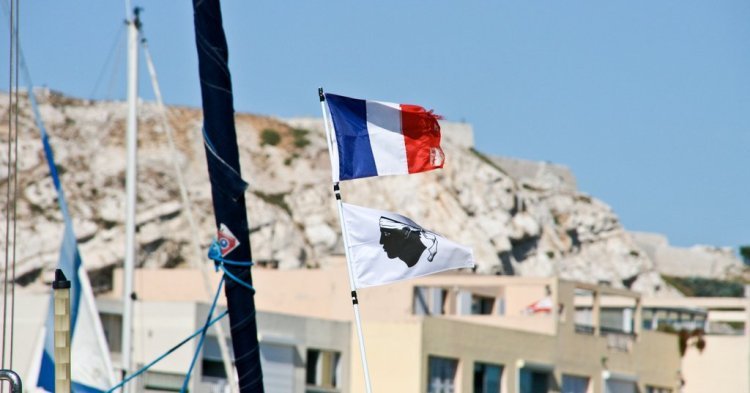Last December, European media turned to Corsica. Two years after the autonomists first won the regional elections in the region, they came back at the end of 2017 and gathered 56,5% of the votes. Independentists and autonomists, led by Jean-Guy Talamoni and Gilles Simeoni respectively, won 41 seats together - out of 63 - of territorial representatives at the Corsican Assembly, with the Pè a Corsica (For Corsica) the nationalist coalition party. This score shows that the inhabitants of the island are fiercely proud to be Corsican and that their traditions are still very much embedded in their everyday life.
Their ambitions are, however, far less important than the Catalans’, expressed in regional elections last December. But after two Catalan independence referendums (on 9 November 2014 and 1 October 2017) and the Catalan declaration of independence by Carles Puigdemont on 10 October 2017, European leaders fear regional autonomous ambitions.
The demands expressed by Simeoni and Talamoni are more modest and the overall situation is only slightly worthy of a comparison with what happened in Spain. Corsica doesn’t have enough of an economic and political impact to put pressure on the French government. As a result, Brussels doesn’t have to worry about a new internal diplomatic crisis and the Corsican autonomists are going through a rough spot.
New region, old ambitions
The newly elected nationalists are facing a regional debt of 600 million euros, supposed to be fixed with a budget of 1 billion euros for the new Corsica region. This brand new “Single Territorial Collectivity” (“Collectivité Territoriale Unique”) merged the three main administrative subdivisions [1] which managed Corsica: South Corsica (Corse-du-Sud), Upper Corsica (Haute-Corse), and the original region.
This reform implies changes in the administrations and new competences to manage the region, but France is not a federal state, and the Corsicans want more. After the first round of the election last December, Jean-Guy Talamoni declared that “if Corsicans want [independence] in ten or fifteen years, no one will be able to go against this decision”.
The morning after the first round, when the party had certainty that a democratic success was close, he threatened “to tour the Europeans capitals” in case of a “denial of democracy” by the French government.
Macron is making sure that the Corsican case is taken care of. Two days before the nationalists won the elections at the end of the second round, Jacqueline Gourault, already working with the Ministry of the Interior, was appointed in charge of the talks with the island.
An island with no leverage
Compared to Catalonia, which incarnates a strong Spanish economy and is the first touristic destination in Spain, Corsica is simply not ready to start a new European crisis. Even the Corsican nationalists see their demands as a slow process and are probably looking for a higher degree of autonomy, rather than a complete independence. The region’s GDP only represents 0,4% of the French one.
For the government of the country, the complete independence of Corsica wouldn’t be a tremendous loss. But economically, the island would have troubles to find stability and growth, even though their economic dynamism seems favorable at the moment.
Jean-Guy Talamoni, leader of the autonomists and President of the regional Assembly of Corsica, declared, before the elections, that he stills sees France as a “foreign [country], but friendly” and was hoping that Paris could hear the strong popular nationalist votes.
Macron gives little room to maneuver
At the beginning of February, the French President visited Bastia, the second biggest city of the island. Emmanuel Macron met with the independence leaders and delivered a public speech later that day. He recognized that Corsica had a different culture that needed to be preserved but still re-affirmed that the island was “at the heart of the Republic”.
Macron only gave one thing away, and it looked more like a symbolic opinion, as he declared he was “favorable to a mention of Corsica in the Constitution”, which would incarnate a solid solution to avoid an institutional crisis.
According to the leaders of Pè a Corsica, this speech was a “missed opportunity” for Macron to engage a true dialogue between those craving for independence and the French government.
Early February, before Macron’s visit, about 20,000 people protested in a nationalist rally in the streets of Ajaccio. There are only 330,000 people in total on the island. The main goal of these protests were to engage discussions with the French government in a more meaningful way, by showing the popular strength of the newly elected party. Those protests were peaceful, but Macron’s denial of the independentist ambitions might have brought tension between the island and the government.


Follow the comments: |
|
